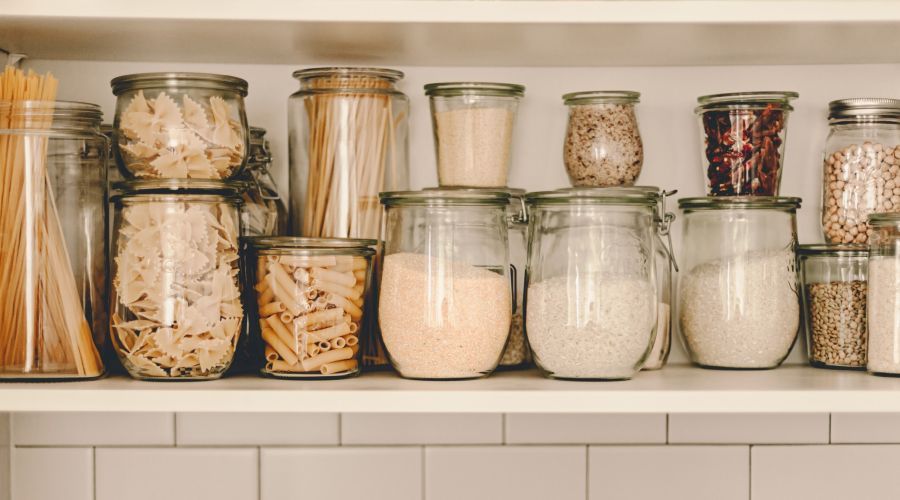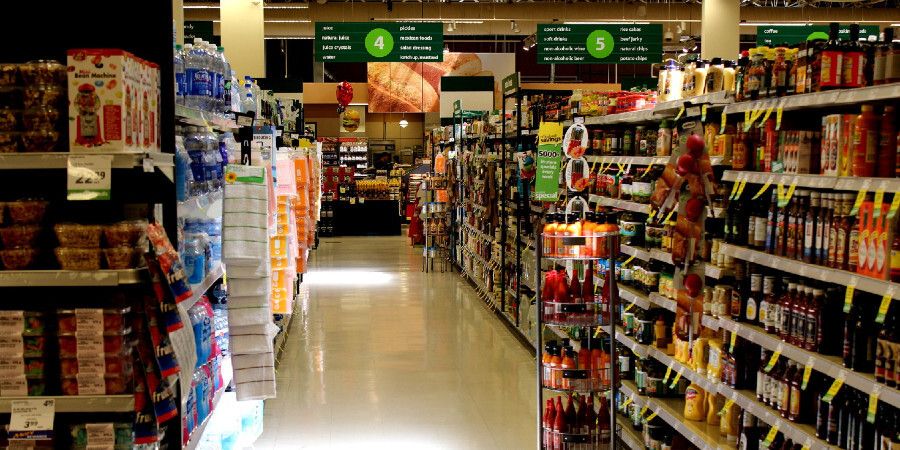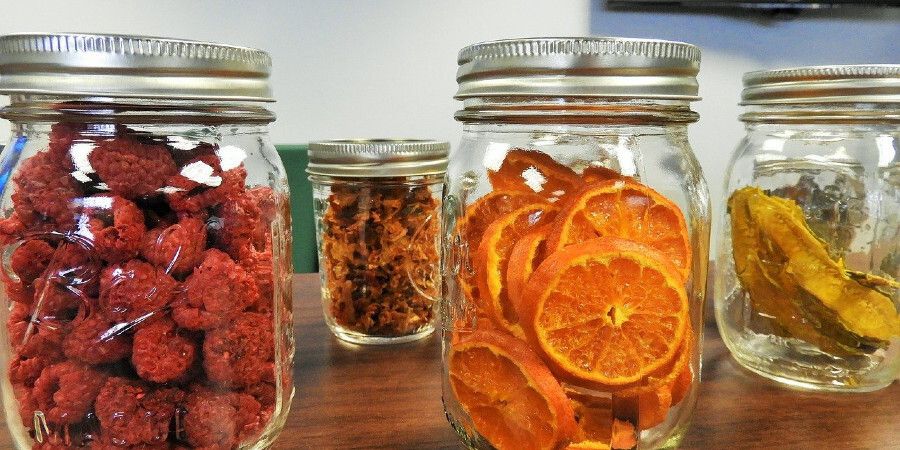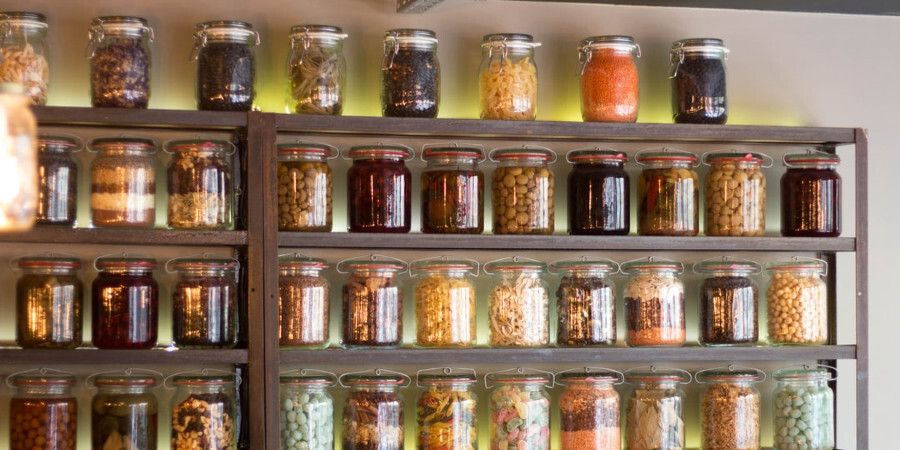One of my earliest memories in life was a survival training camp trip into the state forest of Michigan when I was only four years old. We built our own lean-tos, purified our own water, and prepared our meals over a small canister cooking stove. I've been prepared for almost any emergency ever since.
Because of that training, I've known that having enough food and water is one of the most important aspects of survival – whether you're camping and get stranded somewhere, or a storm hits and your power lines are down for your electric stove. Here are lists of emergency food supplies that will get you through trying times.
Finding the Right Store-Bought Staples for Your Pantry
The easiest way to stock your pantry for emergencies is with store-bought items. All you have to do is shop, pay, and store the items in a dry, cool place.
Canned Goods Are Your Friend
The number one go-to for a survival pantry is canned goods. The reason? Canned goods can last for a lot of years of neglect. They'll collect dust on the outside, but the food inside is just as good now as it was when it was first canned unless you go significantly past the "best by" date.
When you grab your canned good from the store, double-check to make sure they're canned with BPA-free materials. Canned goods generally safely last for up to four years after their expiry date.
Foods to consider stocking in your canned goods section could include:
- Canned fruit in light syrup, skip the heavy syrups (21 grams of sugar per serving versus 13!) to avoid extreme loads of added sugar
- Applesauce, preferably in glass jars, as glass doesn't leach into food
- Salmon, tuna, smoked oysters, crab meat, shrimp, sardines
- Canned soups, ideally, aim for vegetable soups with protein in them
- Cartons of non-dairy milk such as almond or rice
- Chili, stew, and other hearty canned meals
- Canned meats such as chicken breast or turkey, ham, roast beef, or corned beef
- Pasta sauce, ideally in glass or metal containers rather than plastic
- Peanut butter, almond butter, or sunflower kernel butter
- Jars of jelly, jam, or preserves
- Canned vegetables
Dried Foods Make for Healthy Survival Fare
Another part of what you may wish to keep on hand is dried foods like dried beans, dried fruits, crackers, grains, and nuts and seeds.
Consider stocking any of the following items:
- Sealed packages of crackers, sealed into air-tight containers
- Dried fruit like prunes, raisins, apricots, or peach slices
- Whole-grain cereal, unopened packages should be sealed into an air-tight container
- Granola bars, sealed into air-tight containers
- Nuts, seeds, and trail mix
- Jerky, whether you prefer beef, turkey, elk, or other kinds
- Freeze-dried fruits and vegetables
- Cups of noodles or packages of Ramen
- Pasta, sealed in airtight containers
- Packets of hot cocoa
- Teabags, sealed into an airtight container
- Vacuum sealed coffee
- Instant rice
- Instant mashed potato flakes
- Dried beans, peas, and lentils
Liquids to Keep on Hand
All the foods are necessary, but so are some beverages, particularly water.
- Bottled water, lots of it!
- Sports drinks, though these should be limited because of sugar and sodium content
- Bottled juices, also limited because of added sugar content
Miscellaneous Items to Keep in Your Survival Pantry
Finally, there are some less thought of items to keep on hand to make sure you can access your food, feed your pets, and at least somewhat enjoy the food in your stockpile when served.
- Manual can opener
- Salt and pepper
- Other dried seasonings and herbs
- Sugar
- Dietary supplements, like Iron, Vitamin D3, Calcium, Vitamin C
- Prescription medications can be kept in storage in small amounts, be sure to rotate out monthly to keep them fresh
- Specialty items such as baby food or diapers
- Pet food for any of your furry family members
- Water purification system or tablets
- Flashlights
- Extra batteries
- Candles and lighters or matches in a waterproof container
- First aid kit
- Hand sanitizer, bars of soap, and dish soap
- Zipper seal or plastic containers for open food storage
- Napkins and paper towels
- Cups, plates, bowls, and flatware for each family member, plus a few extra
- A pair of scissors
- A serrated-blade sharp knife
Creating Your Own DIY Emergency Food Supply List
The ideal way to provide food for your family is growing and canning your own foods like pickles and squash. This allows you to better control what goes into those foods on the shelf. If, for example, you're trying to control sugar intake or sodium consumption, canning your own vegetables allows you to reduce these additives.
If you're specifically going to grow and can your own with survival stocking in mind, think through the lists above before you plant and see which items are best for your family to have homemade and healthier, like canned vegetables or canned tomatoes and pasta sauces.
You can also invest in a food dehydrator or make your own beef jerky at home if you'd like to avoid added sugar and salt or prefer a certain flavor you can't find on the store shelves.
Have a look at our list of how long food keeps in the pantry to cross-check which items are best suited as emergency supplies.
How Much Should You Store of Each Item?
Since family size and nutritional needs vary from household to household, it's best to think about maintaining your emergency food supply based on suggested guidelines from the experts.
FEMA says you should keep a 3-day supply of nonperishable foods per person, along with a 3-day supply per person of bottled water on hand. Ideally, if you have the space to store it, a lot of folks preparing for a potential disaster recommend keeping a 2-week supply on hand for every person in your household.
The Canned Food Alliance gets more specific by saying that you should provide 5.5 ounces of protein, 2.5 cups of vegetables, 2 cups of fruit, 3 cups of fluid milk equivalent, 6 ounces of grains, and 1 gallon of water per person per day.
Tips for Keeping Your Stock Fresh and Useful
Keeping that supply fresh is important, so I'll close with thoughts on how to best preserve everything and special notes on supply rotation.
- Use a waterproof marker or pen to date everything when you purchase it both canned and non-canned goods
- Store foods in a cool, dry, dark place
- Rotate foods out every six months to ensure everything remains fresh and usable unless you don't normally eat those items, then rotate as the expiry dates approach
- Make sure that the food is easily accessible in the dark
- Keep water towards the front of the supply and canned goods toward the back
Prepare to Evacuate
Many emergency situations entail sheltering in place. The power may be out and services disrupted, but you'll have everything you need for camping at home. In some situations, however, it might be necessary to evacuate. For this reason, it's important to take emergency essentials with you.
- A couple of large plastic containers should contain your supplies so you can pick them up and head out the door without running around wasting valuable time.
- Discuss various disaster scenarios with your family, to arrange who is responsible for what.
- A checklist stored on top of the primary emergency supply box can provide a critical reminder of what needs to be done, including counting noses before you start the car.
- Practice an escape drill and see if you and your family can get everything out of the house and into the car in ten minutes or less.
If the time comes that you need to take action quickly, you'll have a plan and be able to respond immediately. Meanwhile, stay safe and prepared.




